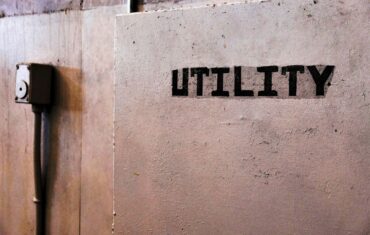While the title industry weathered the pandemic, a great shift happened in the way that companies kept closings carrying on. They were forced to go remote, implementing the latest technologies to complete closings digitally. Now that we’re past the pandemic’s peak, hybrid work environments have become a new standard for many companies in the title and real estate industry. Across the nation, over 70 percent of companies are utilizing a hybrid work environment.
During this change, though, outlining how the hybrid work would be conducted was overlooked. In fact, 72% of companies across all industries were found to be lacking a defined strategy for their hybrid work environment. Without a clearly defined strategy, team members can feel disconnected, default to their own work habits, and misperceive conversations they have virtually. It’s pertinent for leaders to analyze their internal communications on a regular basis to ensure employees are satisfied and connected to their fellow team members.
Communication Is the Backbone of Companies
While some might not think that communication has been affected heavily by this modern work environment, many studies have proven the opposite. In subtle ways, employees are affected by a workday at home with more screen time and fewer in-person interactions.
Communication is the backbone of keeping employees engaged, ensuring quality is maintained and supporting team collaboration. More importantly, strong communication and teamwork keep your all-stars from seeking out greener pastures.
Strategies to Improve Communication
Hybrid-work communication ultimately causes stress on employees that leaders must address. Without clear guidelines and a culture that supports healthy communication styles, employees will slowly lose engagement with their team. In this new environment, we combat “Zoom fatigue”, missed opportunities for casual chats, and much-needed breaks from responding to a barrage of emails.
It’s necessary for companies that utilize a hybrid-work model to maintain strong levels of communication each and every day to promote a healthy employee experience and reduce levels of exhaustion. Here are a few key strategies to reduce the stress of working from home full-time or even just a few days out of the week.
Communicate With Intention
Being intentional about sending quick messages, emails, and scheduling meetings is important in team communications. This intentional communication reduces the stress of employees needing to be connected to their computer, or worse, their phone, 24/7.
It’s easy to have a thought that you want to get over to someone immediately, but pause first and think if it can wait. We all know the “ding” of a bunch of Slack messages coming through and the worry that ensues. It also causes distraction and an opportunity for mistakes to be made – something that title work cannot allow for when a homeowner’s future is on the line.
Other methods of being intentional in communicating include:
- Taking notes or writing an email draft instead of sending a chain of messages to allow the idea to be more organized
- Promoting a culture where multiple methods of communication are used to increase engagement and a sense of connection to the team
- Scheduling meetings for longer discussions. It can avoid miscommunication and lost messages in a thread
- Using voice messages on communication channels or even recording short screen recordings with tools like Loom to make communication more effective and interactive
Allow For Delayed Responses
In your workplace, it should be emphasized that employees don’t need to feel pressured to respond right away. In a normal office environment, people can’t always respond to messages or emails right away. Employees are in meetings, have conversations with coworkers, and take breaks to grab a snack at the bakery around the corner.
Those small moments give us an important mental break to take our mind off work or simply slow down and brainstorm about a project. It’s easy for teams to forget the start and stop of a workday when messages come through outside working hours, too.
Asynchronous vs. Synchronous
Asynchronous communication and synchronous communication should be top of mind in building an effective strategy for internal workplace communication. It’s important to set clear expectations for employees on the urgency of communication methods.
Asynchronous communication is something that doesn’t need to take place immediately. In many companies, these would be things like Slack messages or Gchats, emails, and other brief channels of communication where action or response can wait.
Synchronous communication is the opposite. It includes scheduled items like virtual meetings, brainstorming sessions, strategy calls, and so on. These channels of communication are where many people feel drained and should be utilized intentionally. Also, be mindful of someone’s time zone if they’re in a different location than your company’s location.
Centralize Communication
Another overlooked aspect of communication is organizing the information in a centralized manner when various tools are available to your teams. This looks differently based on your team and the various platforms used, but it’s often helpful to have a few strategies to avoid information overload or information being lost in the shuffle. An email or direct message on a chat platform can easily be forgotten. To centralize information and keep good ideas flowing, try the following methods:
- Use a project management tool or something similar to keep everyone on your team aware of tasks that have been completed
- Have someone takes notes during a meeting and attach them to the calendar event or send it out as a follow-up email
Fight Virtual Meeting Fatigue
Sitting in front of a computer is something already known to be draining on employees, but when you’re sitting in a meeting and forced to keep your eyes on the screen, it tires people out even more. While meetings can be very effective, there are ways to make them less of a strain for your team, especially if they’re already meeting with homeowners and real estate agents.
Another important consideration is that females experience more video meeting exhaustion than men. There isn’t a lot of data on this type of fatigue, but four factors were examined in a recent study on the phenomenon. Those were:
- Mirror anxiety
- Being physically trapped
- Hyper gaze from a grid of staring faces
- Cognitive load from producing and interpreting nonverbal cues
Several ways to combat virtual meeting distress:
- Allow for off-camera discussions when appropriate
- Keep meetings to less than an hour
- Come prepared with a brief outline of the meeting’s talking points
- Avoid shifting meetings around last-minute
Give Recognition and Highlight Employee Strengths
While these communication aspects were standard in a well-established company’s office, they can be lost in a virtual world. Employees should always be recognized for their achievements throughout the year, not just during annual reviews. This motivates people to succeed in their roles and feel connected to the company and the rest of the team. It optimizes the distinctive abilities and makes them feel like a valued part of the team. It also increases their motivation to support customers and use their strengths to the fullest.
Several ways to highlight employees:
- Use a platform like Nectar or other versions to give employees a space for company recognition
- Create time in team meetings or all-hands meetings to congratulate employees on their successes
- Have employees take professional assessments, like a Gallup Strengths Finder, to understand the ways they operate in the workplace
- Tailor roles to a team member’s strengths and challenge them to think about how it bolsters their skills in the workplace
- Have regular discussions with your employees on a one-on-one basis to praise them for their work
Maintain a Connection With Company Culture
Employees who feel connected to a company will feel more motivated to do their work daily. Keeping a connection with the company culture is harder in a hybrid work environment because employees can’t see their coworkers and feel the excitement of the company’s successes as they happen. If employees can’t envision how their work is impacting the company, they won’t feel like a valued part of the greater team. This form of connection will transfer to customers too because they’ll feel proud to be working for a company that support homeowners each and every day.
There are a few ways to maintain this connection to the company’s goals and vision:
- Host all-hands or all-company meetings regularly with company updates
- Have executive team members share exciting news in an email. Consider using short videos, graphics, or other visual tools to make the emails more engaging
- Use company data to showcase the company’s growth or achievements
- Host virtual events or lunch-and-learns to bring employees together
- Consider offering book clubs or other interest groups that employees can be a part of
Close the Communication Gap
While a hybrid-work model has many benefits that modern workers enjoy, it comes with challenges. Communication is just one aspect of this. Ultimately, it takes the effort of leadership to close the communication gap and continuously reinforce a strategy for success.
Without clear guidelines through training, continued education, and honest conversations, employee engagement can dwindle quickly. Not only that, but stress, fatigue, and distraction can decrease team productivity. Using intentional communication, reinforcing a culture of delayed responses, and focusing on celebrating employees and the connection to the company are the keys to succeeding in our modern work world.










